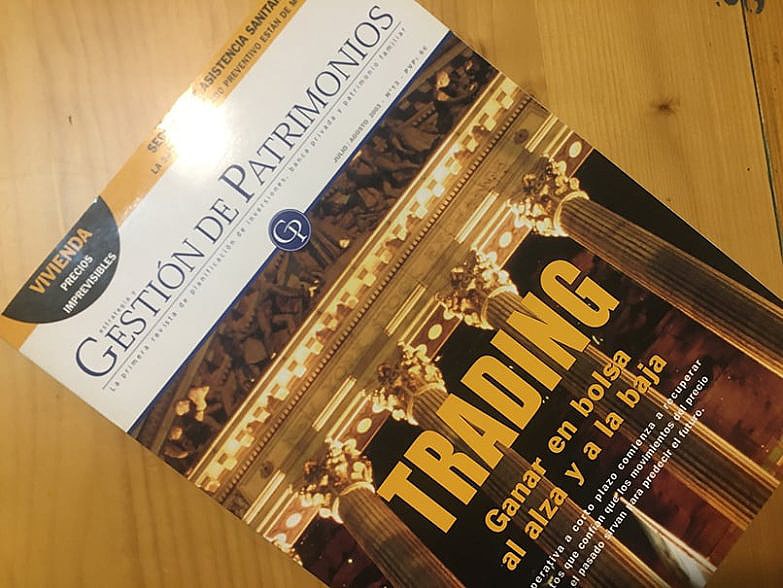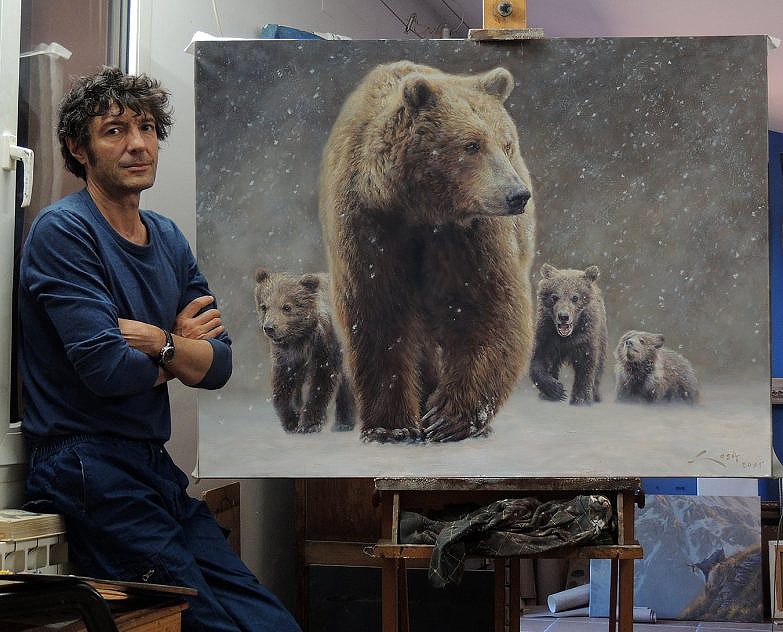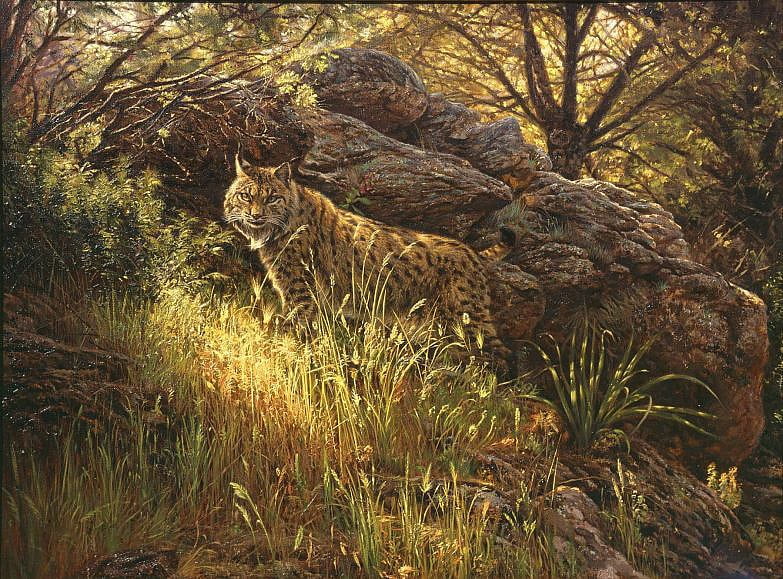"The price of exhibiting in private galleries is very high and not everyone is concerned about promoting the artist".

Interview with the painter Manuel Sosa for the magazine "Gestión de patrimonios".
The Marcelino Botín Foundation has chosen him as the winner of the Marcelino Botín Award. How did you tackle this project?
The foundation suggested that I represent the Iberian lynx in a genuinely Mediterranean landscape. The lynx ascending, the greenery, the ash tree raising its arms to the rising sun. All the elements in this triangular composition evoke hope for the great Iberian tiger, dying, in a land that man claims for his own.
Which part of the work did you find most complex?
Probably the composition. I like to create a certain imbalance in my works that forces the viewer to travel through the work.
Is it an added pressure to know that the recipient of the work is the Royal Household?
Yes, but that doesn't mean that I don't put the maximum into all my works. Don Felipe expressed his gratitude to me and the impression the painting made on him, so I'm very happy about that. Having one of my works in the Royal Household will have good repercussions on my career in Spain, because some of them have already had a strong impact outside Spain, in the United States, for example, where I have frequent travelling exhibitions.
How would you define your work?
I love the countryside and I try to convey it on canvas. They define it as a real painting but I don't think a realist painter tries to express "only" what he sees. You don't have to be
an idealist to accept that perception has a subjective component. Painting has much more to do with feeling than with understanding, I am much more interested in the aesthetic fact than in the analysis of reality. Art is above all a treatise on beauty. Artists, especially writers and painters, have brought man into contact with nature. Nature is poetry in itself. It has always been the first source of inspiration for painting.
What technique do you use?
For a long time I have been mainly a watercolourist, and in recent years, I have turned almost exclusively to oil painting. When you have tried all the techniques, you discover why this is the queen of them all. No other technique allows you to finish your work with such freedom.
Can you summarise the evolution of your work?
Painting is a consequence of my admiration for wild nature. This passion was born in Cadiz, at the age of thirteen. Impressed by the richness and abundance of its wildlife, I spent many years in its forests and marshes. I began to observe and make sketches of avocets, spoonbills, flamingos and birds that can be found in these lands. Since then, I have combined my field observations with my work as a naturalist illustrator for editorial projects. This forced me to move to Madrid and finish my studies in Biology and then I decided to take the leap to painting, from paper to canvas, from pencil to brush, trying to imprint the magic that surrounds our birds and their habitats.
last untouched corners. With each new work I notice a progressive distancing from the obvious realism to the suggested realism. It is one of my obsessions, but it is a work of synthesis that must be approached without haste, as it can only be achieved after many years of refined technique.
Did you have problems finding your way in the gallery environment?
I didn't let that obsess me when I decided to take up painting. I didn't approach the first gallery until I had finished forty works. I got off to a good start, in a gallery in Madrid and, despite being a new genre in Spain, all the work was sold in the four years I stayed there. The price of exhibiting in private galleries is, however, too high. In general, their commissions are abusive and not all gallery owners are concerned with the promotion of the artist.
What do you think of the artist/gallery relationship?
I can't say much, I have always liked to be self-sufficient. My first experience was disastrous and, I am sorry to say, after working with other Spanish gallery owners, I feel better collaborating with a gallery in the USA. There I have found everything a painter expects from a gallery owner.
Do you think that the diffusion of an artist is better channelled through a gallery?
In abstract painting, yes, because it is a speculative market that does not usually respond to popular sentiment. If the painting is good, it will flow by itself.
What is the profile of the customer looking for a Sosa?
Anyone who loves painting and feels admiration for nature. Each person is different and there is a wide range of interpretations and tastes when looking at a work of art. Among the animals, they prefer wolves, lynxes, partridges and birds of prey, and in landscapes, people look for the genuinely Iberian ones, with which they are familiar.
Who are your favourite artists?
Romantic painters of the 19th century, the Pre-Raphaelites, the Americans of the Hudson River School and the great monsters of the glorious Russian landscape school of the 19th century, especially Shishkin, who so beautifully captured the grandeur of the virgin forests at a time when photography was not available and each work required the painter's presence in situ in front of the scene, as the master Antonio López does when he portrays his urban landscapes.
What about contemporaries?
Many, but few on a par with the classics. Bateman, a pioneer in Wildlife Art, Harris Ching, Poorvliet, Morgan, Lester, greats of this genre. Outside the naturalistic panorama, I would highlight many Spanish painters such as Torrens Liado, Antonio López, Carrillo, Jose Manuel Fonfría, to name but a few.
On what criteria do you base your assessment of one of your works?
In the effort in engendering it and the final result and, of course, in the public's response.


